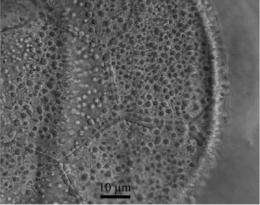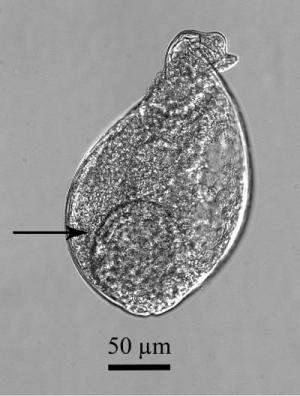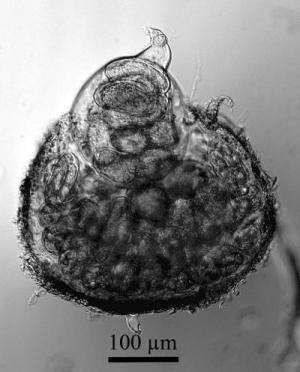A 'regular hexagonal pattern' was found in a plant-parasitic nematode worm

A new plant-parasitic nematode worm (Meloidoderita salina) was found in a tidal salt marsh at Mont Saint Michel Bay (MSMB) in France, where its abbey is a world-famous historical heritage. The species name 'salina' refers to salty soil and is derived from the Latin word 'sal' or 'salis' meaning 'salt'. The study was published in the peer-reviewed, open source scientific journal ZooKeys.
The female nematode worm of Meloidoderita salina deposits its eggs in two different structures. One of them is called egg mass which is an external gelatinous matrix, the other one is a cystoid, which is a swollen uterus containing some eggs. Cystoid are harder and stronger than gelatinous matrix. On the surface of the cystoids of Meloidoderita salina, nematologists observed a specific and unique hexagonal beaded pattern.

"This discovery is probably the first observation of a real hexagonal pattern in the group of nematode worms so far, and further research is needed to find out its unknown origin", said Prof. Dr. Gerrit Karssen, one of the senior members of the team.
A tidal salt marsh, a transition zone between land and water, is a highly divers ecosystem. In MSMB, where this new nematode species was found, a large part of its area are tidal salt marshes in which a high number of ecological studies were done, although nematode worms have been mostly neglected.

"Meloidoderita salina is the first plant-parasitic nematode worm described from Mont Saint Michel Bay", said leading author Samad Ashrafi. This new roundworm parasitizes Sea purslane which is a halophytic plant (is found in salt waters). As a vegetable, the leaves of the plant have a salty, spinach-like taste and are edible raw or cooked and are also served in restaurants.
Based on the distribution map of Sea purslane in Europe, the team expects to find this new plant-parasitic nematode worm in "other western European countries such as Belgium, The Netherlands, Germany and the UK".
The nematologists who described this nematode worm predict it is likely to find Meloidoderita salina on other halophytic plants, grown in similar salt marsh areas.
More information: ZooKeys 249: 1–26. doi: 10.3897/zookeys.249.4138
Journal information: ZooKeys
Provided by Pensoft Publishers

















